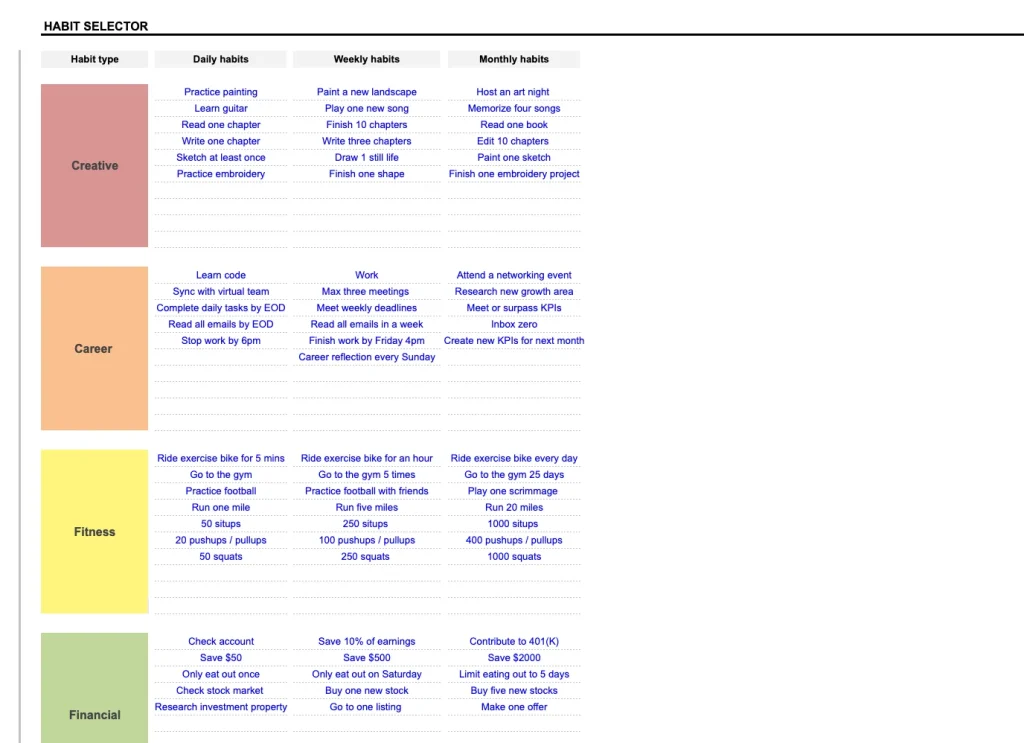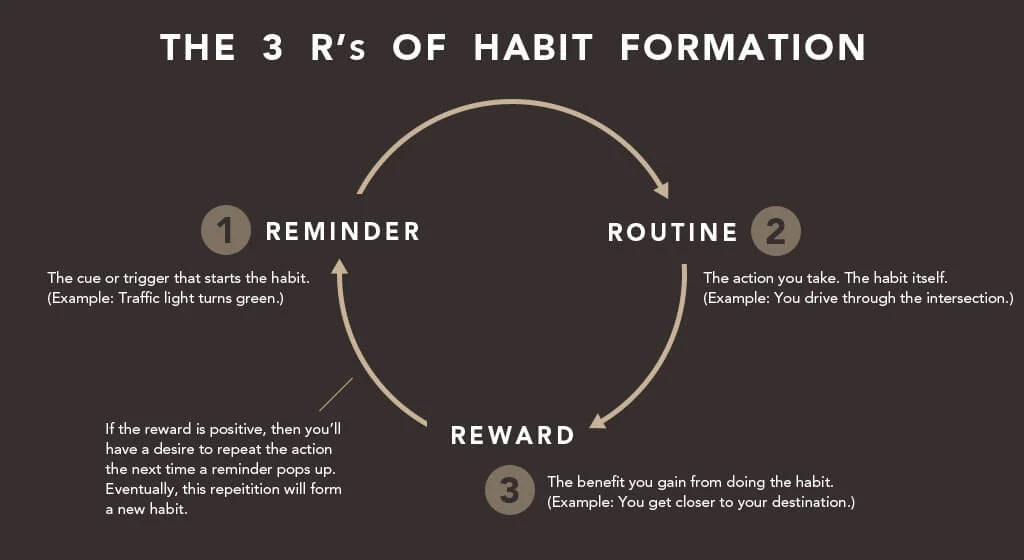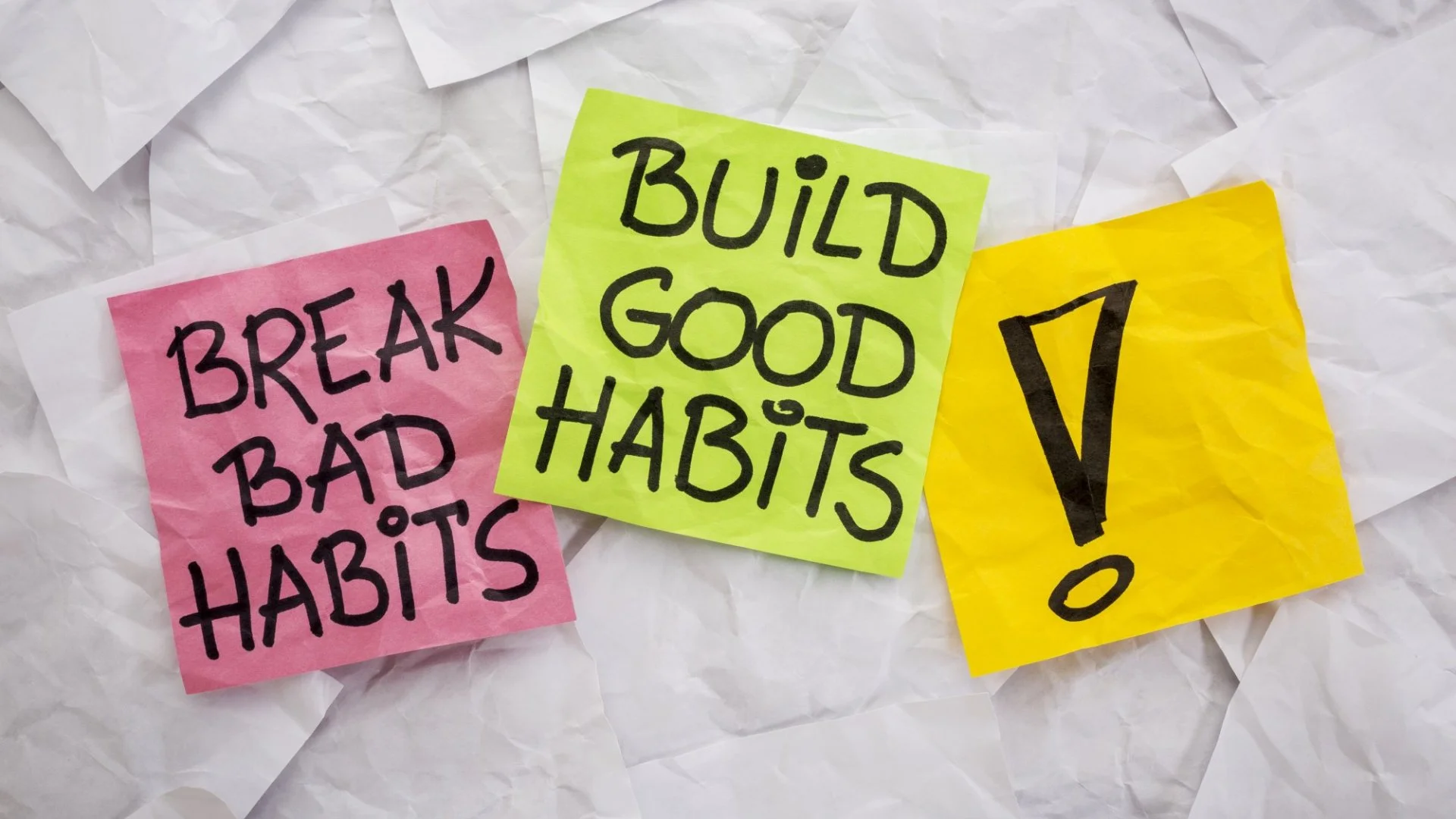Creating lasting daily habits is an effective way of making your life better and realizing your objectives. It is not just about commitment, but also a matter of strategic thinking and knowledge of how habits work.
This comprehensive guide will walk you through the process of How to create new daily habits that stick, addressing common challenges, and providing practical strategies for success.
Why Establishing New Daily Habits is Crucial for Personal Growth
The Science Behind Habit Formation
Understanding the science behind habit formation helps in successfully adopting new routines. A habit loop is a cycle comprising three elements that form habits:
- Cue: This is the stimulus or event that initiates the behavior or action related to forming a habit. Examples include specific times of day, feelings or preceding events.
- Routine: The act or response resulting from the cue.
- Reward: This could be in diverse forms such as compliment from a friend, self-satisfaction, sense of achievement or any other kind of positive reinforcement that would follow the routine thus making it more likely to reoccur again.
According to Charles Duhigg, these are stored within basal ganglia which is a part of brain controlling decision-making and emotions rendering them stabler on consciousness via repetition process.
Benefits of Building Effective Daily Habits
There are various advantages associated with developing efficient daily routines:
- Enhanced Productivity: These practices make routine easily manageable hence tasks carried out faster as well.
- Improved Mental Health: Consistent patterns provide a structure for managing stress and increase overall well-being through anticipation.
- Achieving Long-Term Goals: Inculcating behaviors into one’s system assists in contributing towards success since little consistent acts add up to something great over time.
Step-by-Step Guide to Starting a New Habit
Identify Your Target Habit
The first step towards creating a new habit is to define it clearly and precisely. Whether you want to exercise daily, read more books or eat healthier food, be clear about what type of habit you would like to form. For example, instead of saying “I want to exercise more” say “I am going to do 30 minutes’ exercise every day.
Make It Easy: Break It Down into Manageable Steps
To ensure success, break your target habit into smaller, manageable steps. If you aim at developing a daily meditation practice for instance, start with five minutes each day and increase as you become used to it. This makes the process less overwhelming and helps the new behavior settle into one’s life.
Use Habit Stacking for Seamless Integration
This approach allows an individual to add onto existing habits with new ones together making them one single activity. An example could be if one wanted initiate flossing their teeth every day;
In that case they might decide to do it right after brushing their teeth so that the two acts become combined. By doing this, one is using an already established routine as the catalyst for a novel one hence increasing chances of successful completion.
Tips for Making Your New Habits Stick
Monitor Your Progress Using a Daily Habits Worksheet
By tracking your progress, you can stay motivated and continue on the right path. You can monitor your achievements and failures by making use of daily habits worksheet or even download some habit tracking apps.
This helps to motivate and provide a sense of accomplishment upon seeing the changes realized over time.

Incorporate Positive Reinforcement and Rewards
Development of rewards into one’s habitual behavior can increase motivation to adhere to the new habits being formed. For example, when you succeed on having completed a week of daily workouts, plan something enjoyable like watching a movie or buying yourself something nice.
This way, rewards make people associate positive attributes with their habits making them more likely to stick around.
Overcoming Common Obstacles in Creating Habits
How to Avoid Common Pitfalls
Common challenges which may hinder habit formation include:
- Unclearness: Lack of clear goals makes it difficult for people to remain focused on them thus they should be written down.
- Inconsistency: Deviating from doing an activity even once may bring many setbacks. Establish ways through which one can always maintain their regular activities such as reminders and keeping track of what he/she has achieved so far.
- Too much too soon: Sometimes individuals take up many behaviors at ago which may lead to fatigue hence it is better off working on one character trait at a time.
Getting Back on Track after Slipping Up
During the process of forming habits everyone faces hitches along the way. Should you miss out one day or fail in some other aspect never mind about it because everybody does stumble sometimes; just acknowledge it and reorient yourself back to your objectives.
Bear in mind that consistency is vital and each day presents a new opportunity for anyone to get things moving.
The Role of Patience and Persistence in Building Habits
Building habits takes time and effort so one needs to be patient as well as remain committed. On an average it has been observed that an individual may take approximately 66 days to form a habit, though this may vary depending on the nature of the habit or the person involved.
Therefore, approach every single step as important towards achieving your ultimate goal even when you feel like giving up due to slow pace.
Good Examples of Daily Routines
Morning Routine: Start Your Day Right
A properly organized morning routine puts people in better moods for the rest part of their day. Include some activities such as:
- Exercises: Perform simple workouts or stretch up exercises that will increase energy levels.
- Eating healthy breakfast: Make sure you have a helpful meal before leaving home.
- Planning: Look at what you want to achieve during the day and set priorities based on that.

Midday Routine: Boost Productivity and Focus
During daytime hours one should incorporate productivity boosts and maintaining focus such as:
- Scheduled Breaks: Take few minutes away from work to recharge their batteries.
- Task Prioritization: Like using pomodoro technique etc. while reading material could help manage tasks properly.
- Mindfulness: Use mindfulness or deep breathing techniques when stressed out or trying to keep focused.
Evening Routine: Relax and Get Ready for Tomorrow
An effective evening routine helps you calm down and gear up for the next day. Include activities like:
- Reflection: Thinking about your accomplishments and making plans for tomorrow.
- Relaxation: Activities that are soothing such as reading or taking a bath.
- Sleep cleanliness: Create a sleeping pattern that will ensure restful sleep.
Infusing Psychological Insights into Habit Formation
Understanding the Psychology of Habit Creation
Psychological theories, like the habit loop and the Fogg Behavior Model, provide explanations on how habits are formed. The Fogg Behavior Model stresses motivation, ability, and prompts in behavior change. Knowing these principles will help you create better habits and routines.
How to Use Behavioral Psychology to Build Better Habits
Applying behavioral psychology principles can improve how you build habits. For example:
- Behavioral Triggers: You can use visual or environmental cues to prompt your desired habits.
- Gradual Change: Make gradual changes so as to avoid resistance while increasing chances of adopting a new habit.
- Accountability: Share your goals with others or find someone who is willing to hold you accountable.
How to Customize a Daily Routine for Your Needs
Adapting Habits for Personal Goals
Customize your daily routine around your personal goals and priorities. If you want to get fit, prioritize physical activity when developing your schedule.
On the other hand, if professional growth is what you are interested in, allocate time for skill development and career-related tasks.
Adapting Your Routine as Your Needs Change
Circumstances in life may change making one’s priority shift occasionally. Always review and adjust your routine on regular basis so that it does not become irrelevant over time.
Flexibility enables individuals cope with unexpected incidences or take advantage of arising opportunities while still working towards their objectives.
Real-Life Examples and Success Stories
Inspiring Stories of People Who Successfully Built New Habits
Reading about others who have successfully built new habits can provide motivation and insights. For instance, James Clear, author of Atomic Habits, narrates various accounts of people whose lives changed due to minute and consistent alterations. These stories underscore the influence of persistence as well as incremental progresses.
Lessons Learned from Habit Formation Journeys
Learning from others’ experiences can help you navigate your own habit formation journey. Key takeaways include starting small, staying committed, and being flexible in difficult situations.
How Habits are Formed
- Know Habit Formation: Get to know the science and psychology behind habits.
- Start with Just a Little bit: Divide your habits into small pieces and use habit stacking.
- Continue Doing It: Keep track of your progress, give yourself treats and overcome problems without giving up.
- Customize Your Routine: Make your habits fit your goals and adjust them if necessary.
- Use Tools and Resources: Utilize applications and worksheets that can support you in building new habits.

Tools and Resources to Help You Build New Habits
Recommended Habit-Tracking Apps and Tools
There are several tools that you can use to track your habits such as:
- Habita: A game that turns forming habits into fun challenges.
- Streaks: An app that helps you build good habits by tracking your streaks of success.
- Habit Bull: A habit tracker with its features customizable and motivational statistics.
Useful Worksheets and Templates for Habit Creation
Use worksheets and templates to organize and plan your daily activities. Some examples include:
- Habit Tracker Templates: Printable or digital templates to record your daily progress.
- Goal-Setting Worksheets: Tools to define and track your habit goals and milestones.
Conclusion
Building new daily routines is a path which necessitates commitment, perseverance, and strategic thinking. Familiarize yourself with scientific knowledge about habitual mechanisms while practicing different strategies for building habits in order to overcome common obstacles thereby lead an improved life through establishing long-lasting patterns.
FAQs
Q: How long does it take to make or break a habit?
A: Typically, it takes about 66 days to establish a fresh habit; however, this can be shorter or longer depending upon how complicated the behavior is or any individual differences there might be.
Q: What should I do if I miss one day?
A: If you miss a day, recognize the mistake, determine why it happened then get straight back on track. Be consistent but also allow yourself some leeway.
Q: Can I start more than one habit at a time?
A: Although many people try to undertake too much at once when they want multiple habits introduced simultaneously into their lives having one goal in mind often proves to be more effective thereby enhancing one’s chances of success while averting being overwhelmed with tasks.
Q: How can I continue doing what has been started?
A: To maintain motivation levels during transition periods, measure your progress and use reinforcement. Tell yourself how great you feel now that you do not have to lie to anyone about the real cause of your habit.
Q: Is there any equipment available to support me in creating habits?
A: There are numerous tools for habit building, including Habit tracking apps such as Habita, Streaks, and Habit Bull as well as printable worksheets and templates that can be used for planning and monitoring development.

Russell F. Jones, holding a Master in psychology from the University of Florida. He writes for Smart Parent Solutions, offering practical advice on parenting and child development. His engaging content helps parents navigate family life with confidence and ease. Russell enjoys sharing his knowledge and spending quality time with his family.
